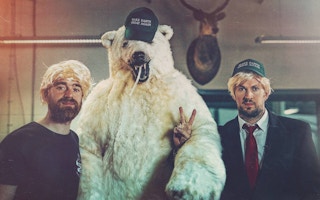A British craft brewer has launched a beer made from melted polar ice caps, sending a case of “Make Earth Great Again” to the White House to highlight climate change denial.
Profits from the beer will be donated to 10:10, a charity that supports projects tackling climate change.
BrewDog said it was inspired by the US withdrawal from the Paris Accord, a pledge made by nearly 200 countries in 2015 to limit global warming, mainly by cutting carbon dioxide and other emissions from the burning of fossil fuels.
“Make Earth Great Again is a reaction to declining interest from notable world leaders to the biggest issues facing our planet and civilisation,” Brewdog co-founder, James Watt, said in a statement. “Beer is a universal language.”
The Scottish craft brewer said the beer is brewed with water from melted polar ice caps and Arctic cloudberries, an edible fruit similar to a blackberry that is native to Arctic regions.
Labels on the Brewdog bottles depict a cartoon robot resembling US President Donald Trump battling a polar bear.
This story was published with permission from Thomson Reuters Foundation, the charitable arm of Thomson Reuters, that covers humanitarian news, women’s rights, trafficking, property rights, climate change and resilience. Visit http://news.trust.org
Our Standards: The Thomson Reuters Trust Principles.

















